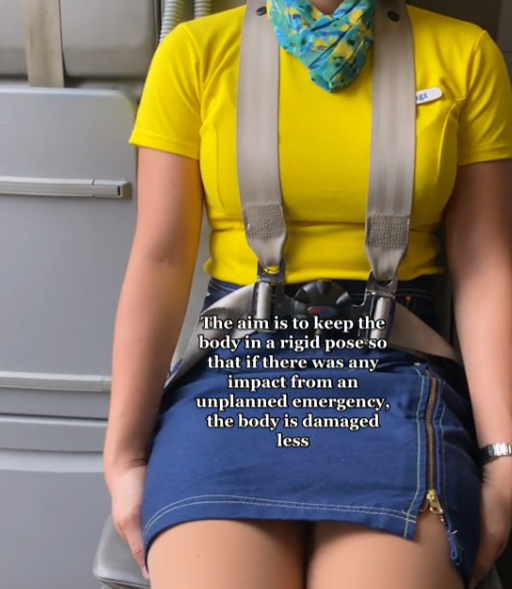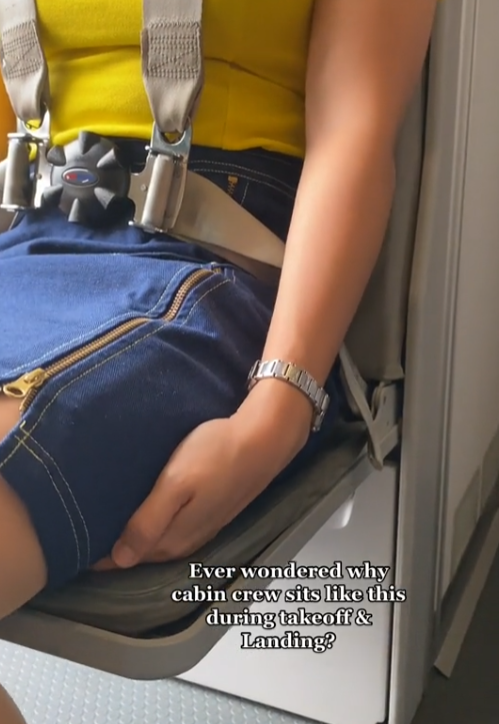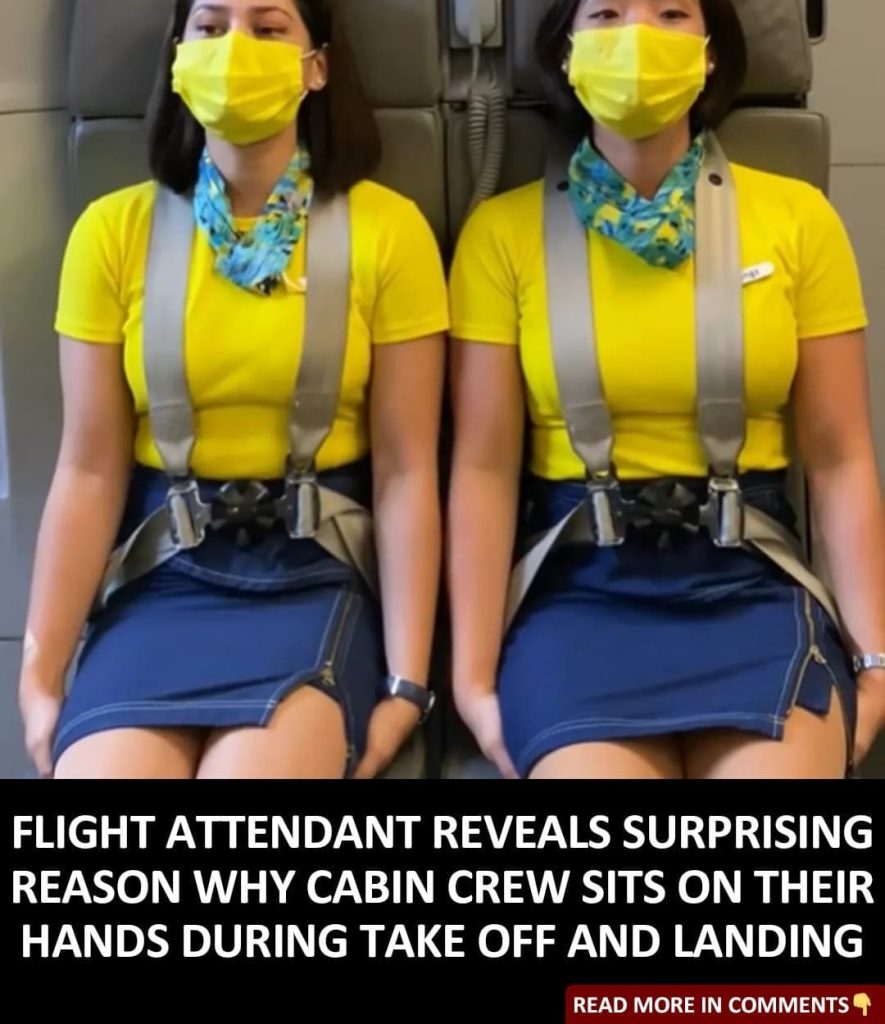The Essential Role of Flight Attendants: Understanding the Bracing Position
In the world of air travel, flight attendants play a critical role that goes well beyond serving refreshments and ensuring passenger comfort. These trained professionals are primarily responsible for the safety and well-being of everyone on board. Among the various protocols they follow, one particular practice stands out—the bracing position adopted during takeoff and landing.
What is the Bracing Position?
When passengers notice flight attendants buckling up in their jump seats and sitting on their hands during landings, it often raises questions.

Henny Lim, a flight attendant with Cebu Pacific, shed light on this intriguing procedure in a viral TikTok video. She explains that the bracing position involves several specific actions: fastening seatbelts securely, sitting upright, placing hands on thighs with thumbs tucked, keeping arms relaxed, and ensuring feet are flat on the floor.
The Purpose of the Bracing Position
The primary goal of the bracing position is to minimize bodily movement during potential emergencies, thereby reducing the risk of injury upon impact. By assuming a rigid posture and securing themselves in their seats, flight attendants are better equipped to endure the forces experienced during a crash landing.

During this critical time, flight attendants engage in what Lim describes as a “silent review.” This mental preparation involves familiarizing themselves with emergency equipment, practicing door operations, recalling commands, and observing visual cues outside the aircraft.
Regulatory Insights
The significance of the bracing position is reinforced by regulatory authorities such as the Federal Aviation Administration (FAA).
According to an FAA memo, this position serves two essential functions: reducing flailing and minimizing secondary impact. Uncontrolled movement of limbs, known as flailing, can lead to additional injuries during a crash.

By adopting the bracing position, flight attendants can mitigate this risk. Moreover, positioning the body, especially the head, against the surface it would strike during impact helps lessen the severity of injuries.
Flight Attendants’ Perspectives on Safety
Henny Lim’s explanation is part of a growing trend where flight attendants use platforms like TikTok to educate passengers about safety protocols while sharing their unique experiences. Khong biettulamahmalaycuabomaylamtheboconcho
For instance, fellow flight attendant Destanie has gained popularity for recounting amusing incidents involving passengers attempting to secure seat upgrades. While entertaining, these stories also serve to highlight the importance of adhering to safety protocols and respecting the professionalism of flight attendants.
Challenges and Rewards of the Profession
Flight attendants like Destanie and Esther Sturrus provide candid insights into the complexities of their profession.
They acknowledge the challenges, such as managing difficult passengers and working under high-pressure conditions, yet they also express gratitude for the lifestyle and opportunities their jobs offer. Their unwavering dedication to ensuring passenger safety remains a top priority, even amidst the challenges.
The bracing position adopted by flight attendants during takeoff and landing is not merely a ritual; it is a vital safety measure aimed at reducing the risk of injury in emergencies. Through the insights shared by professionals like Henny Lim, passengers gain a deeper understanding of the reasoning behind this practice and the meticulous preparation involved in ensuring their safety.
As flight attendants continue to share their knowledge and experiences, travelers are empowered to approach air travel with a greater appreciation for the dedication and professionalism of those entrusted with their safety.


